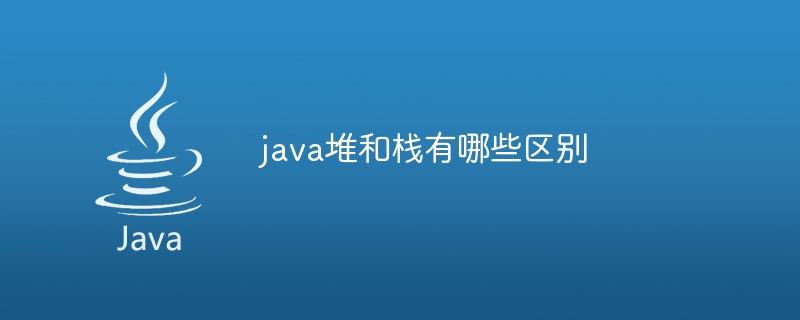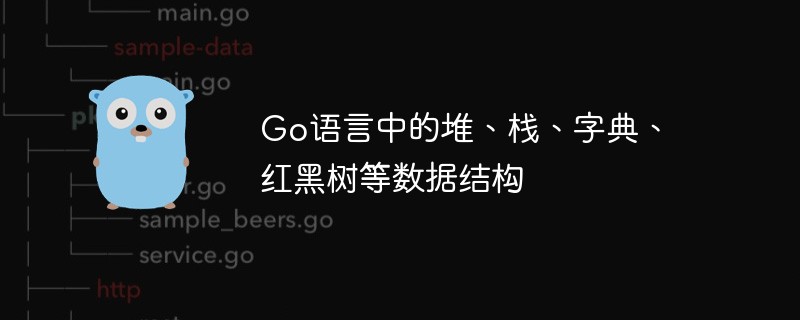
The initial state of the stack is simply: The initial state of the stack itself when we have not yet pushed or popped elements into the stack (That is to say: when elements are not being moved in and out of the stack, the top pointer and bottom pointer in the stack point to a state such as this)
Stack (stack), also known as stack, is A linear table with limited operations. A linear table that restricts insertion and deletion operations only to the end of the table. This end is called the top of the stack, and the other end is called the bottom.
Inserting a new element into a stack is also called pushing, pushing or pushing. It is to put the new element on top of the top element of the stack to make it the new top element of the stack; delete it from a stack Element is also called popping or popping off the stack. It deletes the top element of the stack and makes its adjacent elements become the new top elements of the stack.
1. PUSH algorithm
①If TOP≥n, overflow information will be given and error handling will be performed (before pushing into the stack, first check whether the stack is full, if it is full, it will overflow; if not, do ②);
②Set TOP=TOP 1 (the stack pointer increases by 1, pointing to the push address);
③S(TOP)=X, end (X is the newly pushed element);
2. Pop off the stack (POP) algorithm
① If TOP ≤ 0, underflow information will be given and error handling will be performed (check whether the stack is empty before popping off the stack, if it is empty, it will underflow; if it is not empty, do ② );
②X=S(TOP), (the element after popping off the stack is assigned to X):
③TOP=TOP-1, end (the stack pointer decreases by 1 and points to the top of the stack).
The above is the detailed content of What is the initial state of the stack. For more information, please follow other related articles on the PHP Chinese website!
 heap和stack有什么区别Nov 22, 2022 pm 04:12 PM
heap和stack有什么区别Nov 22, 2022 pm 04:12 PM区别:1、堆(heap)的空间一般由程序员分配释放;而栈(stack)的空间由操作系统自动分配释放 。2、heap是存放在二级缓存中,生命周期由虚拟机的垃圾回收算法来决定;而stack使用的是一级缓存,通常都是被调用时处于存储空间中,调用完毕立即释放。3、数据结构不同,heap可以被看成是一棵树,而stack是一种先进后出的数据结构。
 堆和栈的区别Jul 18, 2023 am 10:17 AM
堆和栈的区别Jul 18, 2023 am 10:17 AM堆和栈的区别:1、内存分配方式不同,堆是由程序员手动分配和释放的,而栈是由操作系统自动分配和释放的;2、大小不同,栈的大小是固定的,而堆的大小是动态增长的;3、数据访问方式不同,在堆中,数据的访问是通过指针来实现的,而在栈中,数据的访问是通过变量名来实现的;4、数据的生命周期,在堆中,数据的生命周期可以很长,而在栈中,变量的生命周期是由其所在的作用域来决定的。
 java堆和栈有哪些区别Dec 25, 2023 pm 05:29 PM
java堆和栈有哪些区别Dec 25, 2023 pm 05:29 PMjava堆和栈的区别:1、内存分配和管理;2、存储内容;3、线程执行和生命周期;4、性能影响。详细介绍:1、内存分配和管理,Java堆是动态分配的内存区域,主要用来存储对象实例,在Java中,对象是通过堆内存进行分配的,当创建一个对象时,Java虚拟机会在堆上分配相应的内存空间,并自动进行垃圾回收和内存管理,堆的大小可以在运行时动态调整,通过JVM参数进行配置等等。
 PHP SPL 数据结构:为你的项目注入速度和灵活性Feb 19, 2024 pm 11:00 PM
PHP SPL 数据结构:为你的项目注入速度和灵活性Feb 19, 2024 pm 11:00 PMPHPSPL数据结构库概述PHPSPL(标准php库)数据结构库包含一组类和接口,用于存储和操作各种数据结构。这些数据结构包括数组、链表、栈、队列和集合,每个数据结构都提供了一组特定的方法和属性,用于操纵数据。数组在PHP中,数组是存储一系列元素的有序集合。SPL数组类提供了对原生的PHP数组进行加强的功能,包括排序、过滤和映射。以下是使用SPL数组类的一个示例:useSplArrayObject;$array=newArrayObject(["foo","bar","baz"]);$array
 Go语言中的堆、栈、字典、红黑树等数据结构Jun 03, 2023 pm 03:10 PM
Go语言中的堆、栈、字典、红黑树等数据结构Jun 03, 2023 pm 03:10 PM随着计算机科学的发展,数据结构成为了一门重要的学科。在软件开发中,数据结构是非常重要的,它们可以提高程序效率和可读性,同时也可以帮助解决各种问题。在Go语言中,堆、栈、字典、红黑树等数据结构也是非常重要的。本文将介绍这些数据结构及其在Go语言中的实现。堆堆(Heap)是一个经典的数据结构,用来解决优先队列问题。优先队列指的是一种队列,在取出元素的时候,按照元
 PHP中的堆和栈的概念及其应用Jun 22, 2023 am 10:38 AM
PHP中的堆和栈的概念及其应用Jun 22, 2023 am 10:38 AMPHP作为一门非常流行的编程语言,其对于数据结构的处理和使用具有非常重要的作用。而在PHP中,堆和栈是两种非常重要的数据结构,它们在程序设计和实现中有着重要的应用价值。本文将从概念和应用两方面介绍PHP中的堆和栈。一、堆和栈的概念堆堆是一种数据结构,它是一种特殊的树形结构。在PHP中,堆是由节点和边组成的一种图形式的数据结构。堆中每个节点都有一个值,并且每个
 PHP SPL 数据结构:数据管理的终极武器Feb 20, 2024 am 11:30 AM
PHP SPL 数据结构:数据管理的终极武器Feb 20, 2024 am 11:30 AMPHPSPL数据结构库简介PHP标准库(SPL)包含了一组丰富的内置数据类型,称为数据结构。这些结构提供了对复杂数据集合的高效和灵活的管理。使用SPL数据结构可以为您的应用程序带来以下好处:性能优化:SPL数据结构经过专门设计,可在各种情况下提供最佳性能。可维护性提高:这些结构简化了复杂数据类型的处理,从而提高代码的可读性和可维护性。标准化:SPL数据结构符合php编程规范,确保跨应用程序的一致性和互操作性。SPL数据结构类型SPL提供了几种数据结构类型,每种类型都有其独特的特性和用途:栈(St
 堆和栈有什么区别Jul 18, 2023 am 10:23 AM
堆和栈有什么区别Jul 18, 2023 am 10:23 AM堆和栈的区别:1、内存中的位置不同;2、内存管理方面不同;3、生命周期不同;4、数据存储方式不同。堆是用于动态分配内存的区域,由程序员手动管理;栈是自动管理内存的区域,用于存储函数调用和局部变量等。堆具有更大的灵活性和更长的变量生命周期,但也需要程序员手动管理内存。栈具有更高的效率和更低的风险,但其内存空间相对较小。

Hot AI Tools

Undresser.AI Undress
AI-powered app for creating realistic nude photos

AI Clothes Remover
Online AI tool for removing clothes from photos.

Undress AI Tool
Undress images for free

Clothoff.io
AI clothes remover

AI Hentai Generator
Generate AI Hentai for free.

Hot Article

Hot Tools

PhpStorm Mac version
The latest (2018.2.1) professional PHP integrated development tool

VSCode Windows 64-bit Download
A free and powerful IDE editor launched by Microsoft

WebStorm Mac version
Useful JavaScript development tools

Dreamweaver CS6
Visual web development tools

SublimeText3 Mac version
God-level code editing software (SublimeText3)






